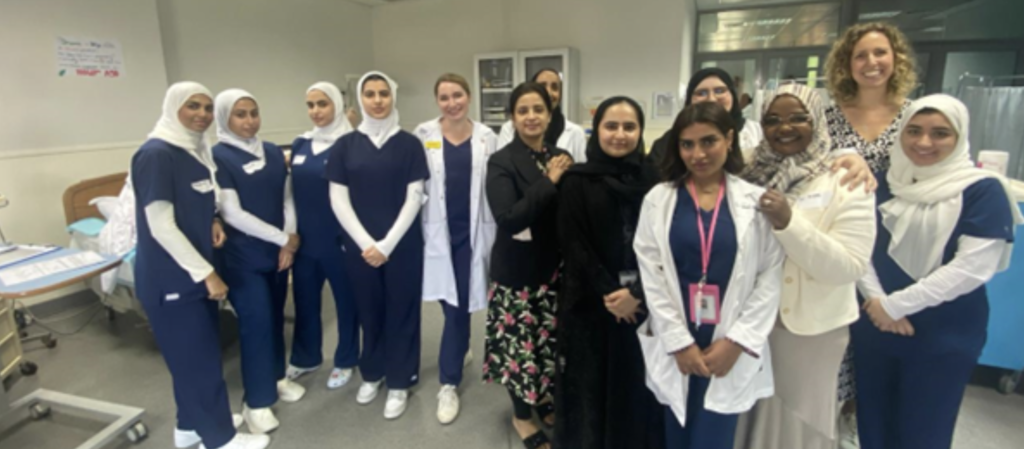Student midwives globally need to be prepared for emergency situations across the pregnancy continuum. In this next article in our continuing series about the new midwifery curriculum in Abu Dhabi, Karradene Aird, Senior Instructor of Midwifery, Fatima College of Health Sciences, shares her experiences of creating the emergencies course.
___________________________________________
I had the privilege of joining Dr. Gina and Dr. Maeve as the third member of our midwifery team on a mission to scale up midwifery in the United Arab Emirates (UAE) in October of last year. This role marks my first in academia, following recent positions in clinical and operational leadership. Earlier in my career, I worked as a labour ward coordinator and specialist fetal surveillance midwife. Naturally, I eagerly accepted the opportunity to develop and lead the obstetric emergencies course for the first time in our programme.
Preparing midwifery students for the challenges of obstetric emergencies is crucial, particularly during their third year of training, which emerges as a pivotal period. This phase not only tests their clinical skills but also shapes their understanding of woman-centered care and the importance of interdisciplinary collaboration.
This module was a personal favourite of mine as a student midwife, something about it just made me feel more ready to be qualified, like I could face anything that lay ahead. If you were anything like me, the semester before my obstetric emergencies’ module was a crucial turning point in my training where I hit a “wall”. Feeling overwhelmed by the responsibilities ahead, juggling exams, assignments, working full time in clinical placement, I questioned whether I was on the right path. Recognising these signs in our students, it became my priority not only to impart the necessary knowledge and skills to manage obstetric emergencies competently but also to instil the same renewed passion, self-belief, and confidence in their practice that my lecturers once instilled in me.
As highlighted in a previous article by my colleague Joanna Andrews (Excitement in Abu Dhabi – reflecting on a new education role), our educational approach follows a block system. Therefore, this six-week course consisted of two weeks of full-day labs followed by four weeks of clinical placement, primarily on the labour ward. Given that our midwifery lab is still being equipped, I had to be particularly creative in delivering my teaching sessions—finally, my inner actress had her debut.
I developed a workbook for the students, divided into two sections. The first section featured questions and activities on leadership, professionalism, and governance, which students completed individually before we discussed them as a group. This session proved invaluable in helping us understand how every role within a maternity service connects and underscores the importance of cultivating a positive, inclusive organisational culture.

The second part of the workbook provided a comprehensive overview of each obstetric emergency, covering definitions, incidence, risk factors, complications, and management strategies. Over the remaining two weeks, we explored each emergency in depth through group work and one-on-one sessions. I integrated both active and visual teaching methods to accommodate diverse learning styles, all underpinned by our core philosophy of woman-centered care. During simulations, students assumed the role of the woman to simulate emergencies, it really helped them to understand what it can be like to be on the receiving end of care, and prompted insightful discussions and constructive challenges during our debriefing sessions within a safe environment.
To conclude the course, I organised two pivotal sessions. The first involved student-led teaching, where groups of students researched, prepared, and delivered simulation sessions. This approach empowered them to take ownership of their learning journey, reinforcing their knowledge while fostering confidence and teamwork. The second session was an interdisciplinary teaching collaboration with one of our placement partners. We know that teams who train and learn together achieve better outcomes for women and babies. While this has been a focus post-qualification, I believe it is equally critical at the undergraduate level. By integrating early training for student doctors and midwives, we can break down barriers and strengthen interdisciplinary cooperation, ultimately enhancing the standard of care provided.
Special thanks to Dr Rabia Zahid, Consultant Obstetrician who supported the facilitation of the interdisciplinary day. The outcome of this collaboration was remarkable; witnessing trainee midwives and doctors complement each other’s skill sets and learn from one another was a defining moment in my career, one I eagerly anticipate replicating.

Karradene Aird
Senior Instructor of Midwifery, Fatima College of Health Sciences, Abu Dhabi
July 2024



3 comments
Excellent approach to Obstetrics Emergencies, well done.
As a lecturer and simulation instructor to medical students at University in Bahrain, it is pivotal all student midwives, medical students, and qualified obstetricians keep updated with regular drills on the labour, antenatal, and postpartum ward, ensuring a strong dedicated team providing excellent and evidence research to their practice
J Coles RM, MPH, CERT HE
Excellent work from the team at Fatima, and great leadership and strong education from Maeve, Gina and Karradene. Always a pleasure to see their commitment to growing the knowledge and experience in the UAE.
Well done Karradene. Best of luck in your next chapter!
Comments are closed.